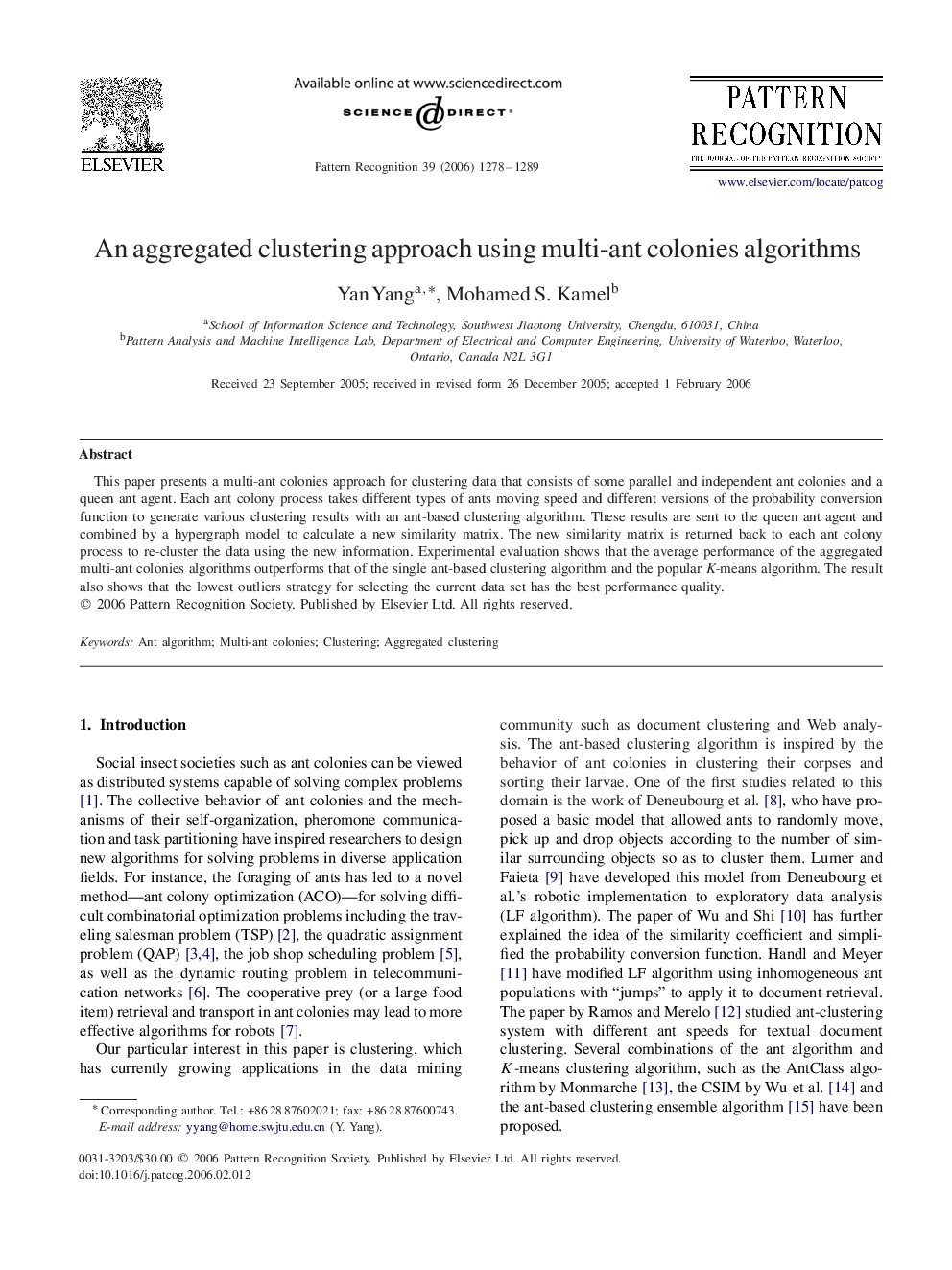| Article ID | Journal | Published Year | Pages | File Type |
|---|---|---|---|---|
| 531979 | Pattern Recognition | 2006 | 12 Pages |
This paper presents a multi-ant colonies approach for clustering data that consists of some parallel and independent ant colonies and a queen ant agent. Each ant colony process takes different types of ants moving speed and different versions of the probability conversion function to generate various clustering results with an ant-based clustering algorithm. These results are sent to the queen ant agent and combined by a hypergraph model to calculate a new similarity matrix. The new similarity matrix is returned back to each ant colony process to re-cluster the data using the new information. Experimental evaluation shows that the average performance of the aggregated multi-ant colonies algorithms outperforms that of the single ant-based clustering algorithm and the popular K-means algorithm. The result also shows that the lowest outliers strategy for selecting the current data set has the best performance quality.
